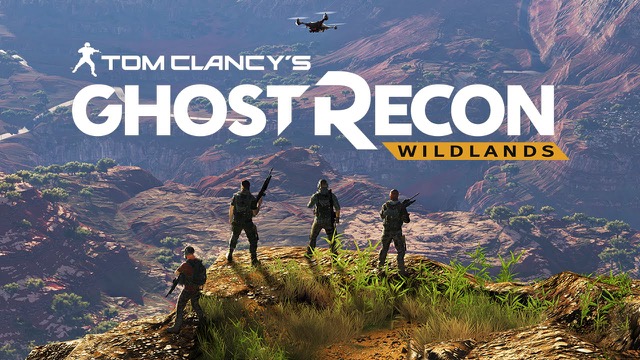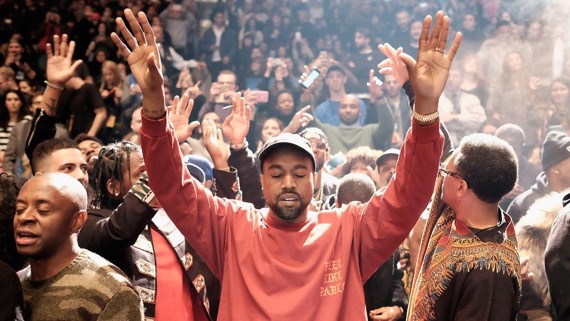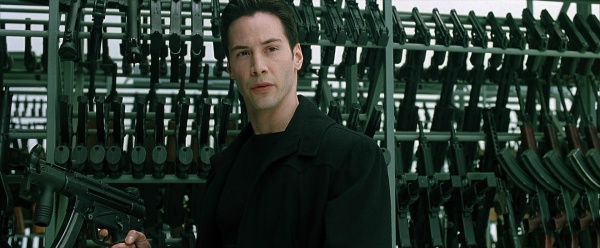Ghost Recon: Wildlands - First Impressions

The beta has ended and in one short week Ghost Recon: Wildlands will be in everyone’s hands. So we sat down this weekend and tore through all of the content that the beta had to offer, both solo, and together in co-op. There was a huge amountof content to be found, and more than a few baffling decisions made. I don’t know if it feels like a Ghost Recon game, but it was damn fun. You can clearly see the influence that other open world games have had on its design. It’s an amalgamation of different ideas and tones that come together surprisingly well.
Postmoderist Theory
As this site moves forward and we begin to introduce more complex topics it will become useful for us to give a primer in some of the themes and ideas that we are talking about. We've done a little bit of this already, but we will be digging in a little deeper into the topics in question. Death of the Critic is, at its heart, a critical website where we try to take a deeper look at different aspects of media. From movies to games to music and more, we aim to enhance the discussion around media in order to deepen our knowledge and understanding.
Let’s talk about schools of theory. When we critique, frequently we do so through a specific lens. Works can have a lot of meaning hidden deep within them, and if we aimed to fully analyze a book, movie, or game, we could easily fill an entire book. So we use these schools of theory as a way to focus in on one particular area of a work. This helps us hone in on a specific idea and expand upon it more fully than if we had tried to do a very broad reading. By centering on one aspect, the analysis becomes more clear and focused.
Postmodernist Theory is much different than anything else that we have looked at so far. We looked at Structuralism a few weeks back, and its take on literature, where order and form are tantamount to meaning. In comparison to Structuralism’s structure, Postmodernism is anarchy. Postmodernism is all about breaking down certainties, things that many texts follow. It is about the rejection of form instead of its strict adherence to it.
Postmodernist theory is again an offspring of a broader school of thought, Postmodernism, which also contains the idea of “Poststructuralism”. As theorists and authors moved through the 20th century, they began to reject and question the ideas behind Structuralism and modernism, moving expressly in the opposite direction, seeing what meaning could be derived by a work explicitly moving away from pre-established forms, narratives, ideas, and archetypes. They questioned why authors felt the need to follow these forms and what structures might be in place to perpetuate these ideas through literatures.
You can see Postmodernism used with Structuralist Theory. What it means when a text adheres to an established narrative as versus when it breaks free. Why a work chooses to follow some rules and not others. To Postmodernist critics, there is no one “Truth”, and indeed, the pursuit of a singular truth is a fallacy in and of itself. The truth is different for every culture and person, shaped by individual ideas and social experiences across the globe. It looks at the experiences of the “other” and how they are cast aside in favor of the “normal”.
There are broad power structures interested in maintaining the status quo through these forms and archetypes. Why are Christ-like figures so prevalent in media, and why are characters with these virtues universally considered good, even when a large number of creators and members of the audience are not Christian? Why are Middle Eastern countries always the aggressors in action movies? Why are many of our superheroes uber-rich?
Postmodernism questions the use of form in the exact opposite way that Structuralism does. Structuralism looks at form in a positive light, bringing order to chaos and providing an intrinsic meaning to a work through its inclusion. Postmodernism sees it as imposing unnatural order on natural chaos in an attempt to make works conform to the “norm”. It questions why a work chooses to follow along with the formula and what it means by breaking it.
Further Reading:
The Death of the Author - Roland Barthes
The Foucault Reader - Michel Foucault
Complexity and Postmodernism - Paul Cilliers
____________________________________________

Tom has been writing about media since he was a senior in high school. He likes long walks on the beach, dark liquor, and when characters reload guns in action movies.
You Might Also Like:
Schools of TheoryWhat is Criticism?
The Hero's Journey
_____________________________________________
Loot Boxes

It’s notable now when a game doesn’t try to incorporate some form of micro transactions into their multiplayer modes to extend their revenue streams out for as long as possible. This speaks to an attitude where companies are competing to be the single game that players buy, keeping them in their ecosystem from as long as possible, and they’ve taken many lessons from the massively popular free-to-play mobile games that dominate the handheld marketplace. But there is a juggernaut that many people ignore. Valve’s moves towards long-term monetization of their stable of multiplayer games has changed the video game industry tremendously, adding a virtual slot machine mechanic to most large multiplayer games that come out. While the gaming community has poked fun at the “hat simulators” for years, we have seemingly ignored the way the crate and key mechanics of Valve games has created this landscape.
The Gospel of Rap

Hip-hop and religion are intrinsically linked. Far from the all-too-common perception of hip-hop as being tied purely into drugs and violence, hip-hop has acted as a reflection of the culture and artists that create it since the first time a track was spun in the Bronx in the 70’s. In the four decades since, woven throughout hip-hop are religious threads that are becoming more and more evident each day. We wrote about it in our article on preconceptions against religious rap last year, but we did not examine the root of it, where this new trend came from.
Post-Colonial Theory
As this site moves forward and we begin to introduce more complex topics it will become useful for us to give a primer in some of the themes and ideas that we are talking about. We've done a little bit of this already, but we will be digging in a little deeper into the topics in question. Death of the Critic is, at its heart, a critical website where we try to take a deeper look at different aspects of media. From movies to games to music and more, we aim to enhance the discussion around media in order to deepen our knowledge and understanding.
Let’s talk about schools of theory. When we critique, frequently we do so through a specific lens. Works can have a lot of meaning hidden deep within them, and if we aimed to fully analyze a book, movie, or game, we could easily fill an entire book. So we use these schools of theory as a way to focus in on one particular area of a work. This helps us hone in on a specific idea and expand upon it more fully than if we had tried to do a very broad reading. By centering on one aspect, the analysis becomes more clear and focused. Read More…
Anatomy of a Scene - Heat

Characterization through action is what defines film. “Show, don’t tell” is the mantra repeated to writers across the world, yet it is rare that we actually see it done well. Heat takes this to heart, and the first time that we see our cast of ne’er-do-wells assembled together on screen, we instantly get a sense for who they are, the relationships they have with each other, and the direction the film is headed in. They do this with a combination of action and horror to create a sense of dark foreboding around the group of men.
Marxist Theory
As this site moves forward and we begin to introduce more complex topics it will become useful for us to give a primer in some of the themes and ideas that we are talking about. We've done a little bit of this already, but we will be digging in a little deeper into the topics in question. Death of the Critic is, at its heart, a critical website where we try to take a deeper look at different aspects of media. From movies to games to music and more, we aim to enhance the discussion around media in order to deepen our knowledge and understanding.
Let’s talk about schools of theory. When we critique, frequently we do so through a specific lens. Works can have a lot of meaning hidden deep within them, and if we aimed to fully analyze a book, movie, or game, we could easily fill an entire book. So we use these schools of theory as a way to focus in on one particular area of a work. This helps us hone in on a specific idea and expand upon it more fully than if we had tried to do a very broad reading. By centering on one aspect, the analysis becomes more clear and focused. Read More…
Super Mario Odyssey
< Super Mario Odyssey continues to baffle me. I don’t always fully understand the decisions that Nintendo makes, but somehow they generally work out for them. So when they released a trailer for the new Mario game for the next real generation of Nintendo consoles, I was actually excited in a way that I don’t usually get about Nintendo products. This is how we got Mario 64 and Galaxy, and the entirely-less-cool Sunshine. New Nintendo consoles ideally drive innovation in gameplay and graphics, so the first real new 3D Mario in years enticed me. Read More…
Gun Porn - Our Fascination with the Firearm

We love guns. Big and small. As long as it goes bang, we want to be able to sit and watch. Guns are ingrained in the American culture and they fill our media to the brim. It is hard to play a game or go to the movie theater without seeing a few of them. It has gotten to the point where the depiction of guns in movie and games crosses the boundary into the real world. You can see it in gunstores across the country, where teenagers stare at racks of rifles and pistols, lusting after the high-tech weaponry like a dog with a bone.